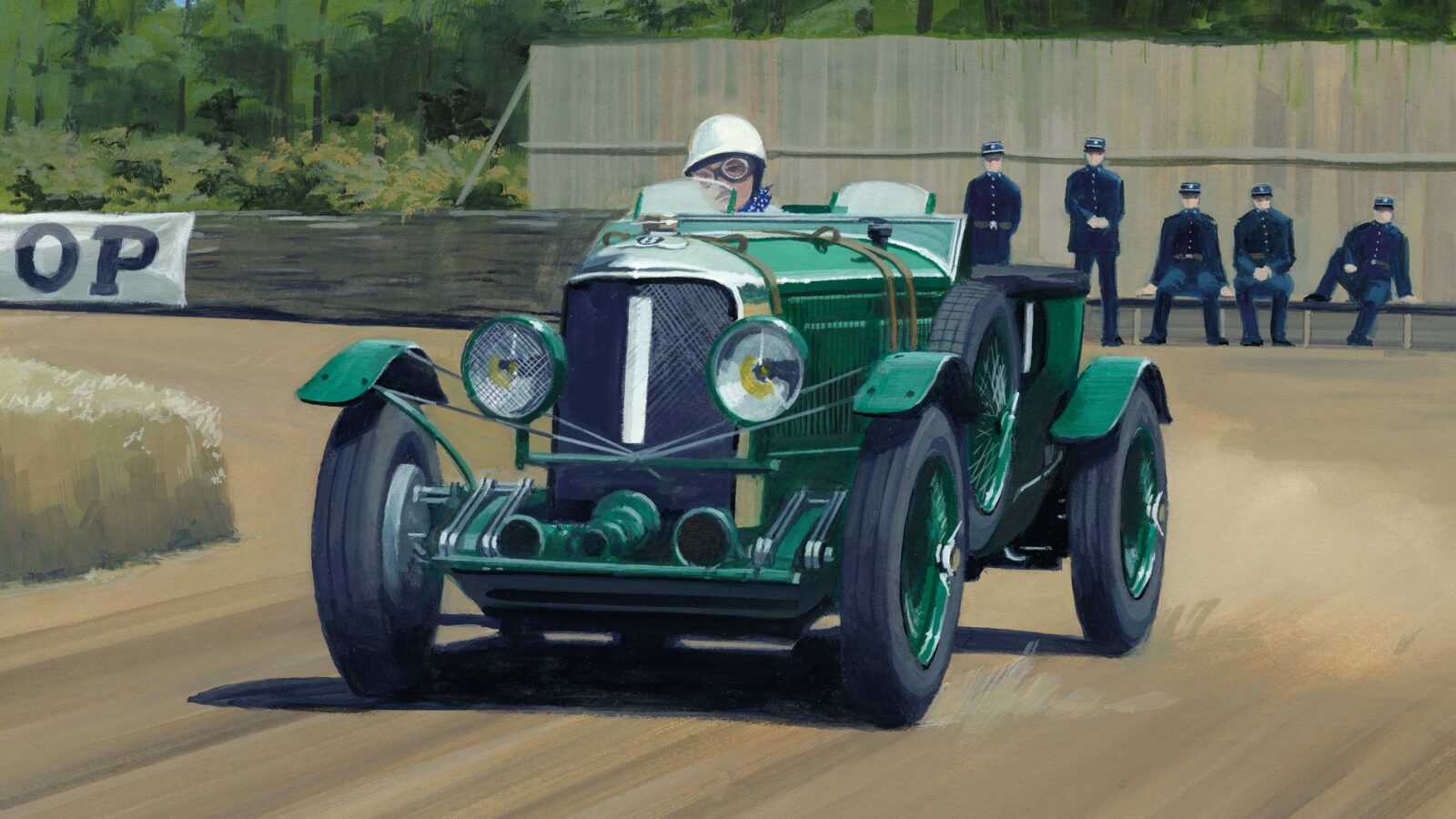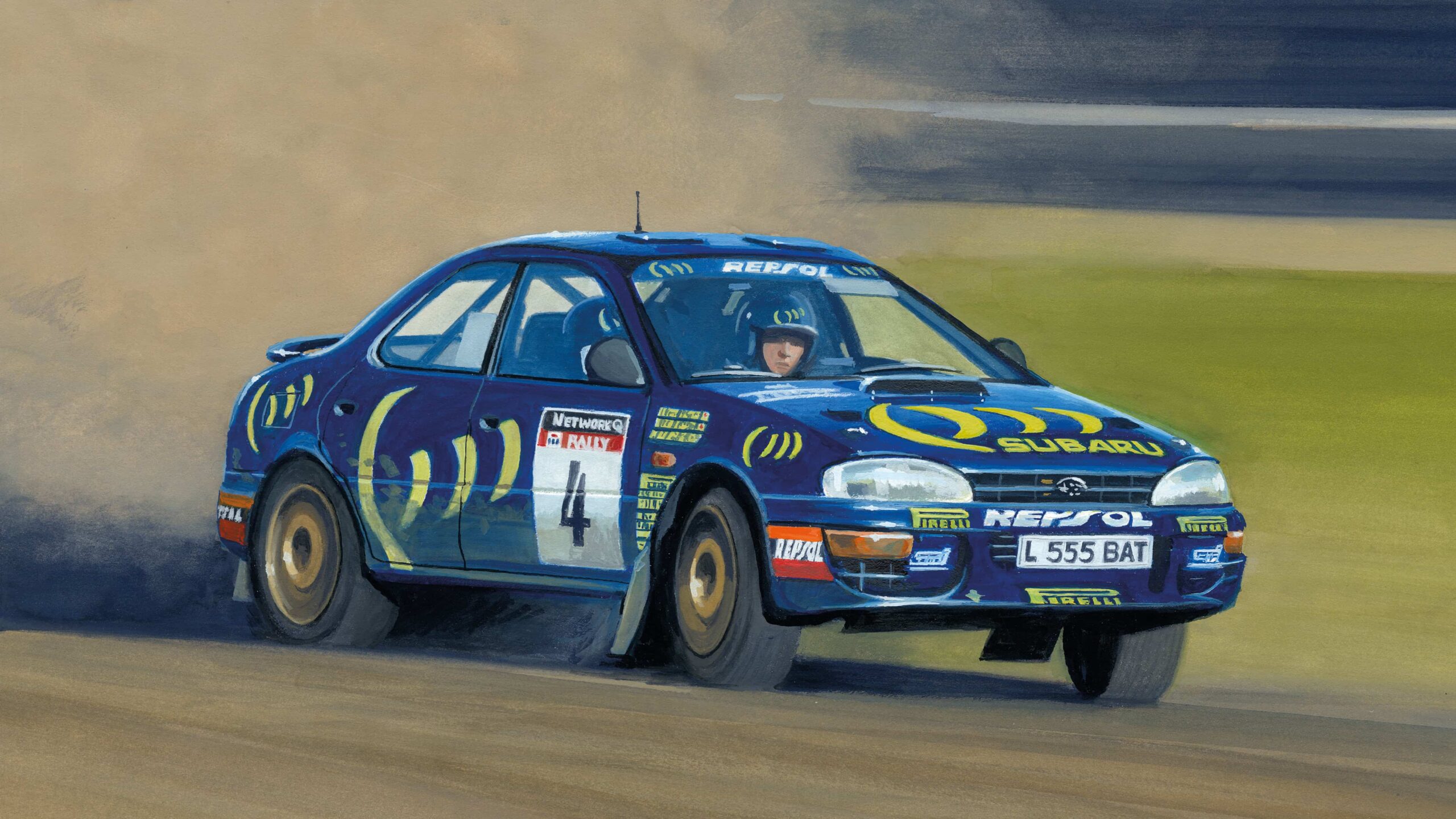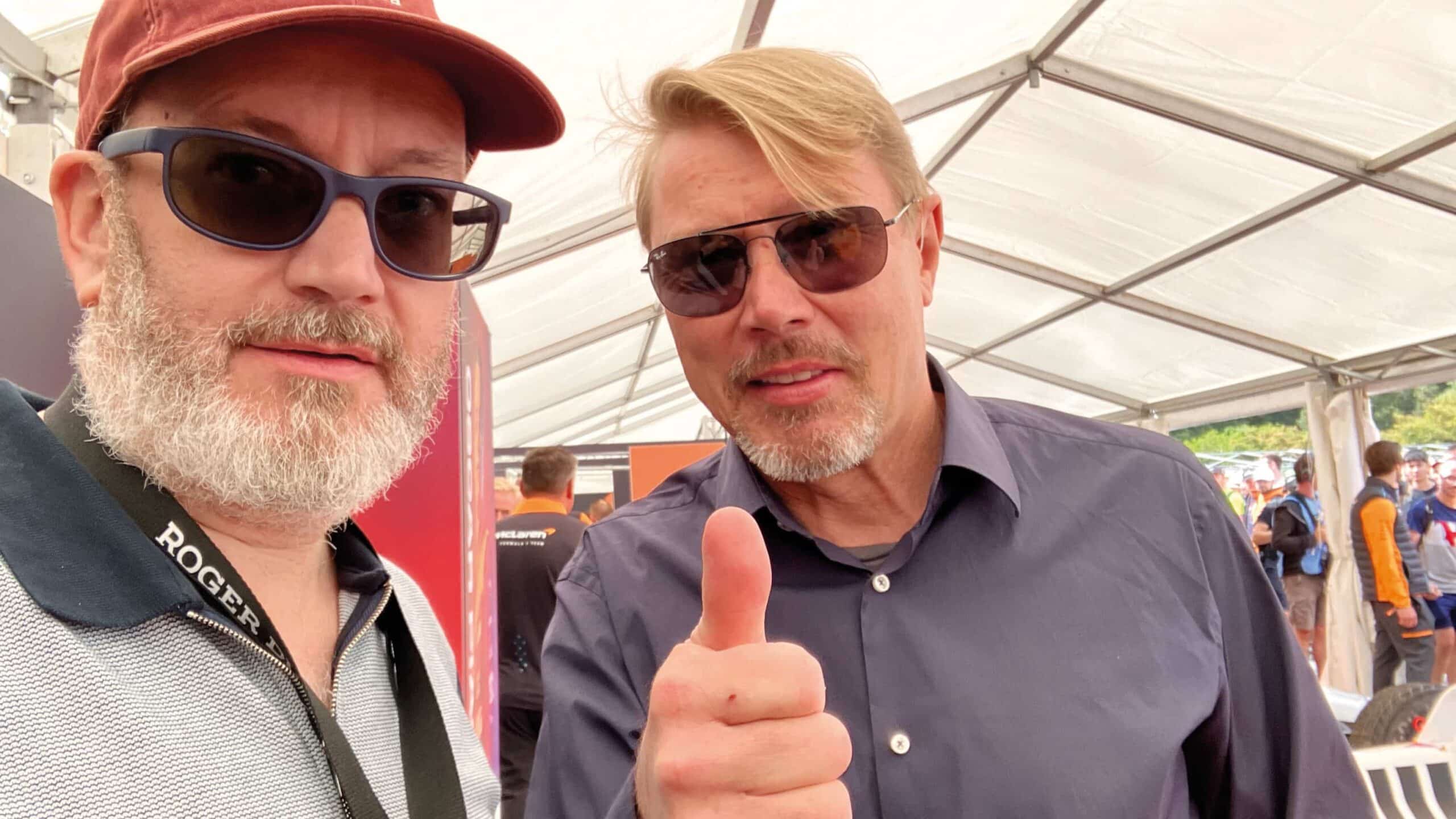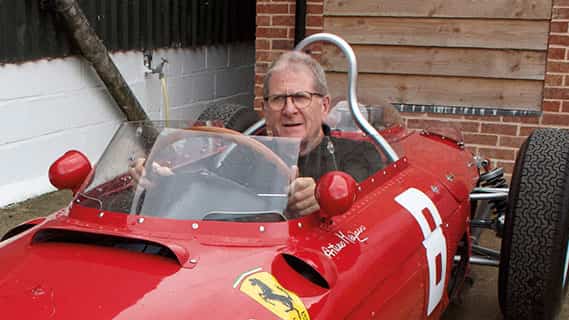Racing’s formidables fill the frame
Fans of motor sport art and artefacts will find an array of products, including these commissioned works, at motorsportmagazine.com/shop

Not long to wait now. Your votes have been flooding in to help determine which of our 10 nominated competition cars from across the last 100 years can lay claim to being the true Race Car of the Century.
While the tallies are rising, renowned automotive artist Martin Tomlinson, inset, has been busy creating artworks to immortalise each subject, with both the originals and limited-edition prints available at the Motor Sport shop. The latest completed works span two entirely different eras of the sport, and two entirely different disciples, with Colin McRae’s World Rally Championship-winning Subaru Impreza of 1995 and Tim Birkin’s 1929 Bentley Speed Six getting the Tomlinson treatment.

“This is actually the first rally artwork I’ve ever done, and I loved creating it as it was something quite different,” says Tomlinson. “Rallying is a fascinating sport. The drivers are perhaps the best in the world because they go to the ragged edge and beyond stage after stage. The onboard videos make Formula 1 look fairly sterile in comparison… I wouldn’t want to be a passenger in one of those things.”
McRae lifted his sole WRC crown in 1995, winning twice to seal the title on home soil in a drama-filled RAC Rally. His blue Impreza is depicted kicking up a cloud of dust and debris as it powers across rugged terrain.
“I love the sensation of speed in the painting,” says Tomlinson. “Circuit racing is very clean in comparison, so having the dust and dirt being thrown from the car gives it a real rawness. I do enjoy rallying. My father used to compete in club rallies, but then he crashed his Morris Oxford through a farm gate on one event and it turned out he’d been competing in his company car! I have no idea how he explained that to his boss.”
At the opposite end of the scale there’s Tomlinson’s artwork showing Birkin’s classic Bentley at Le Mans. Built as a successor to the 4 ½ Litre, the Speed Six claimed back-to-back Le Mans wins in 1929-30.
“The classic Bentleys are tricky to paint as all of the period images are black and white and quite grainy so making out the smaller details is very tough,” adds Tomlinson. “Many of the recreations aren’t accurate either as little things like the mudguard were different on the race cars year on year. I stumbled across a made-for-TV movie called Full Throttle, which told the story of Birkin’s life, with Rowan Atkinson in the lead role. It was through that I discovered Birkin raced with a blue and white spotted scarf, so I included that as it’s a lovely detail. Plus some gendarmes looking on – a Le Mans staple.”
Tomlinson also has a connection to the Bentley Boys, whose racing exploits helped put Britain on the motoring map in the 1920s.
“I used to know [1927 Le Mans winner] Sammy Davis as he was an artist himself, so in the late 1970s we would exchange letters and meet to discuss our works,” says Tomlinson. “He was a wonderful man, in his nineties then and very formal. Whenever he’d write to me it would start ‘Dear Tomlinson’. He was racing tricycles before Brooklands was even built, and was also the riding mechanic for Count Louis Zborowski in the 1924 French Grand Prix, which was actually the first GP Motor Sport [or The Brooklands Gazette as we were then known] wrote about as he was featured in the very first issue in July 1924.”
Martin Tomlinson’s Race Car of the Century range is available to buy at the Motor Sport shop, with prints starting at £120
The expert view
Hunting the stars

A question we’re often asked here at The Signature Store is: how do you get an F1 driver’s autograph if you can’t afford to go to a race? It’s a great question because access to drivers is extremely limited to the public, and often only available to those in privileged positions. But there are ways if you’re smart and patient enough.
The first thing I’d suggest is: wait until they race in something else. Series like the WEC, GT World Challenge Europe, IndyCar… they all act as a brilliant post-F1 career option, and all offer amazing access. At series like WEC or GT racing you can simply wander to the back of the garage and grab your favourite driver whenever they’re available. IndyCar is similar with its ‘family racing’ concept where paddocks are open.
Often this is a great tactic, because it makes no difference if a helmet, boot, glove or photograph is signed at a specific time or not – the signature still adds value regardless of when it’s gained. Sometimes this is a benefit; as things like replica helmets become increasingly rare after a few years, so the item will have appreciated even before you get it signed somewhere down the line.

Another tip is to find them away from races, and I’m not talking about stalking! But keep an eye on social media to see if they’re attending any sponsor or charity events, where the crowds are guaranteed to be lower and sometimes the drivers have time to kill. If you don’t ask, you don’t get. If you spot a driver out in the wild, take your chance to ask if they would sign something or pause for a selfie (as I did with Mika Häkkinen at Goodwood, inset). Pick your moment and don’t invade personal space, but if you’re prepared to put the hours waiting outside a hotel, team factory or circuit gate, the least they could do is give you a quick squiggle… it comes with the territory of being famous!
So you don’t have to attend a glitzy GP for a chance to get close to your hero.
Andrew Francis is director at The Signature Store. thesignaturestore.co.uk

